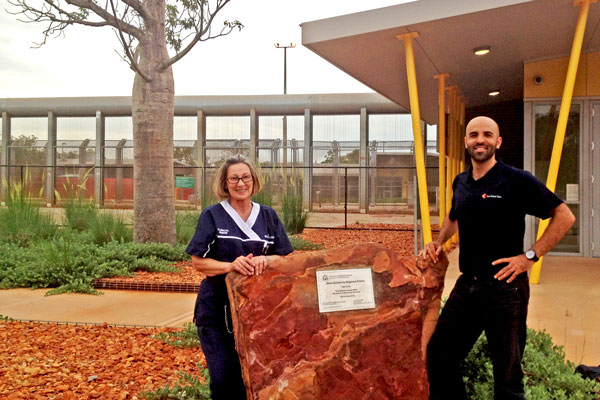Leadership Inspiring Change
Dr Hessom Razavi talks about motivated him to to become an ophthalmoligist and how he uses his skills to address inequallity and improve eye health in remote Indigenous communities.
- What was your inspiration to enter your chosen profession?
Like most people, it’s important for me to feel useful!
Ophthalmology is great in that your utility, or ability to help someone, is directly measurable, every time you check someone’s visual acuity. Ophthalmology is a portable ‘tool’ which is needed everywhere, and can be taken to communities where it’s needed the most. That’s meaningful too. Finally, it seems to be a career that can accommodate a family life, which is a must for me.
- What do you want to see happen in your field?
We need better solutions for the ‘wet’ type of age-related macular degeneration (ARMD). At present, millions of patients around the world visit hospitals every single month for an injection into their eye to treat wet ARMD. While this treatment is effective for most patients, it costs a lot, personally and economically, for patients and society. This year I’m working with Prof Robyn Guymer (Centre for Eye Research Australia), to investigate an alternative model of treating ARMD, in an attempt to rationalise and reduce the treatment burden.
- How do you see the work that you do contributing towards this goal?
In Australia, Aboriginal people go blind six times as often as non-Aboriginal Australians. But in most places, Aboriginal patients have the poorest access to specialist eye services. Much of this blindness is due to diabetic retinopathy, of which around 90 per cent is avoidable, through safe and effective screening and treatment. This is the sort of work I did last year, and hope to build on. The big picture goes beyond eye health, of course, with the need to address inequality and all of its drivers as a collective—no small task.
What drives you to achieve this goal?
Lots of things! Work in preventing blindness is obviously unfinished, and needed more as the population grows and ages. My parents’ example drives me, starting a life in a strange new land, sacrificing and succeeding. My folks in Iran too, who survive under economic/social conditions which make ours in Australia look soft. And then, of course, there’s Michael Jordan, the ultimate role model for any kid with a shaved head wanting to ‘fly’ (or at least float) in their field.
- What does leadership mean to you?
“I suppose leadership at one time meant muscles; but today it means getting along with people.” Mahatma Gandhi

